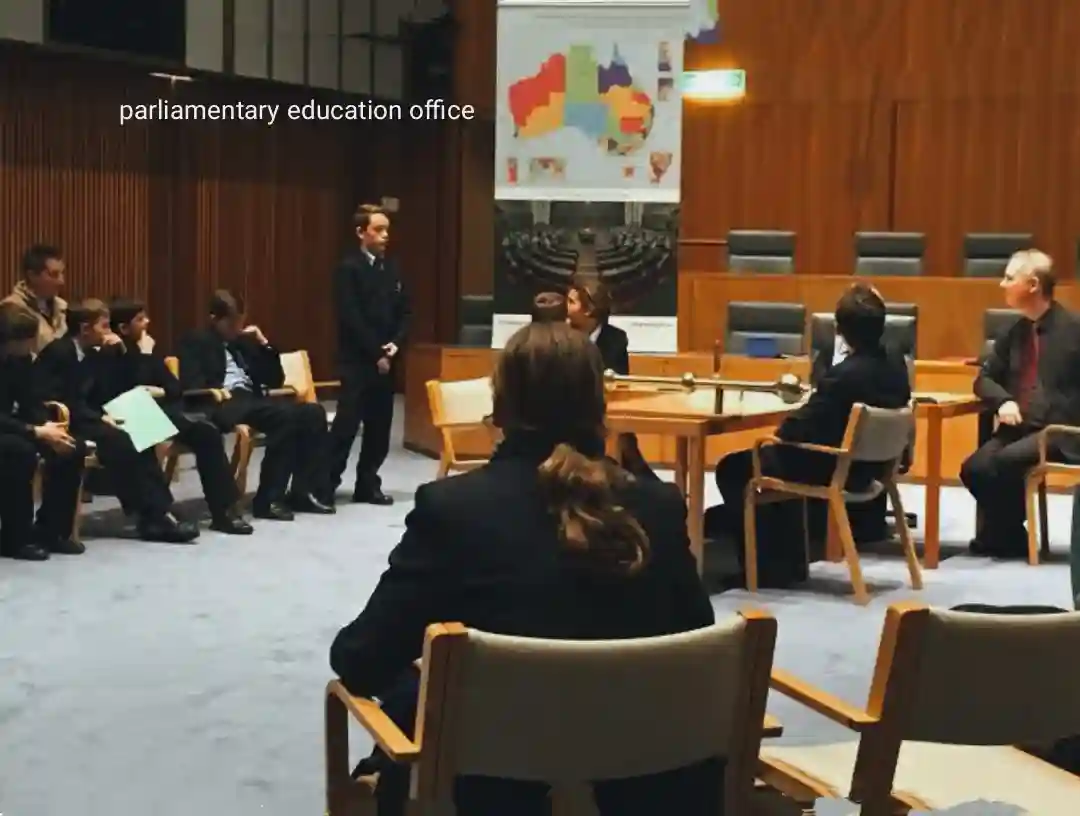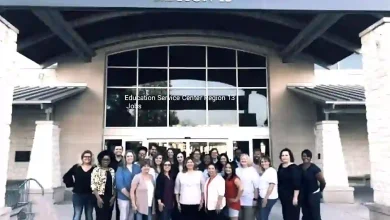Comprehensive Guide to the Parliamentary Education Office: Enhancing Civic Understanding

The Parliamentary Education Office (PEO) plays an essential role in helping citizens understand the workings of their government. In a democratic society, transparent governance and an informed electorate are paramount, and the Parliamentary Education Office is instrumental in bridging this gap by providing accessible, accurate, and engaging educational resources. This comprehensive guide explores the PEO, its mission, programs, resources, and its impact on students, teachers, and the broader community. Understanding the PEO is critical to understanding how parliaments function and why civic education is crucial for a healthy democracy.
What is the Parliamentary Education Office?
Table of Contents
The Parliamentary Education Office is a dedicated branch that provides educational resources and activities about the Australian Parliament. Founded with the vision of nurturing informed citizens, the Parliamentary Education Office promotes knowledge about parliamentary democracy, law-making, and political processes. By focusing on diverse audiences, including students, educators, and the general public, the PEO is a critical educational platform for helping citizens understand how their voices are represented in the Australian Parliament.
The Mission and Objectives of the Parliamentary Education Office
The primary mission of the Parliamentary Education Office is to inform and educate individuals about the roles, responsibilities, and processes of the Parliament of Australia. This mission can be broken down into several key objectives:
- Enhancing Civic Literacy: The PEO strives to improve civic literacy by providing comprehensive resources that demystify parliamentary processes, ensuring that people of all ages can understand how the government works.
- Engaging the Youth: One of the central aims of the PEO is to engage young people by offering dynamic and interactive educational materials that make learning about government exciting and relatable.
- Supporting Educators: The Parliamentary Education Office provides teachers with various classroom resources and lesson plans to support the teaching of civics and citizenship in schools.
- Promoting Democratic Values: Through its educational initiatives, the Parliamentary Education Office promotes the values of democracy, participation, and inclusivity, encouraging citizens to be active participants in their governance.
The Importance of Civic Education
Civic education is an essential element of a thriving democracy. It fosters informed participation in political processes and ensures citizens understand their rights and responsibilities. The PEO’s educational initiatives are necessary because they teach about parliamentary systems and encourage critical thinking, analysis of current events, and the development of informed opinions.
Civic Engagement and Informed Participation
Civic education gives citizens the tools to participate effectively in public life. The PEO’s resources aim to empower students and the general public to engage with parliamentary processes confidently. By emphasizing how individuals can make their voices heard, the PEO ensures that Australians are better equipped to participate in discussions that affect their communities and the nation.
Building Trust in Government
Organizations like the PEO are crucial in building trust between citizens and the government in an era of skepticism and misinformation. By providing transparent and accessible information about the workings of Parliament, the PEO helps citizens better understand decisions made on their behalf, thus fostering a greater sense of connection and trust.
Educational Programs Offered by the PEO
The Parliamentary Education Office offers various educational programs that cater to different audiences, with a particular focus on students and teachers. These programs are designed to make the complexities of parliamentary processes more accessible and engaging.
- Parliamentary Tours
The PEO offers guided tours of Parliament House, giving participants an up-close look at where vital decisions are made. These tours provide insight into the Parliament’s architecture, history, and function. They are particularly popular with school groups, offering students a unique learning opportunity in an interactive and dynamic environment.
- School Visits and Classroom Programs
One key way the Parliamentary Education Office reaches young Australians is through school visits and in-class programs. Educators from the PEO travel across the country to deliver engaging workshops and activities directly to students. These programs are designed to align with the curriculum and provide students with a hands-on experience of how Parliament functions.
- Online Learning Resources
Recognizing the need for accessible educational content, the PEO has developed a rich collection of online resources. These include interactive activities, videos, and downloadable materials allowing students and teachers to explore parliamentary processes anywhere in Australia. This online platform is crucial for reaching rural and remote communities that may need direct access to in-person educational programs.
- Role Play Programs
The PEO’s role-play programs are a standout feature of its educational offerings. These sessions allow students to take on the roles of members of Parliament, debate issues, and pass “laws” in a simulated parliamentary environment. This interactive approach helps students better understand parliamentary processes, decision-making, and the importance of debate and negotiation in a democracy.
Essential Resources Available Through the PEO
The PEO has an extensive collection of resources designed to meet the needs of different audiences. Here are some key offerings:
- Teaching Resources
The PEO provides various teaching resources that align with the Australian curriculum, specifically the Civics and Citizenship units. These resources include lesson plans, classroom activities, quizzes, and worksheets designed to make parliamentary education accessible and engaging.
- Videos and Interactive Content
Videos are powerful tools for explaining complex concepts, and the PEO has embraced this with a collection of educational videos covering topics such as law-making, parliamentary debates, and the roles of the different chambers of Parliament. These videos, combined with interactive tools like quizzes and virtual tours, cater to various learning styles and ensure the information is informative and engaging.
- Fact Sheets and Publications
The PEO also offers downloadable fact sheets and publications explaining various parliamentary concepts. These fact sheets are excellent resources for anyone looking to deepen their understanding of specific parliamentary topics, such as the passage of a bill, the roles of the Senate and House of Representatives, and the responsibilities of key parliamentary figures.
The Role of Technology in Parliamentary Education
Technology has played an increasingly important role in expanding the reach of the PEO. By leveraging digital platforms, the Parliamentary Education Office has provided accessible and interactive learning experiences to individuals nationwide.
- Virtual Tours and Online Simulations
With the advent of technology, the Parliamentary Education Office has developed virtual tours that allow people to explore Parliament House from the comfort of their homes or classrooms. These tours are a valuable resource for schools needing help visiting Canberra in person.
- Interactive Learning Tools
The PEO’s interactive learning tools, such as quizzes, games, and online role plays, make learning about Parliament fun and informative. These tools help break down complex parliamentary processes into manageable and engaging activities that appeal to a younger audience.
- Webinars and Digital Engagement
The Parliamentary Education Office also uses webinars and online workshops to connect with teachers and students. These live sessions directly interact with Parliamentary Education Office educators, allowing participants to ask questions and discuss parliamentary topics.
How the Parliamentary Education Office Supports Educators
Teachers play a critical role in fostering civic knowledge, and the Parliamentary Education Office provides various forms of support to make this task easier. Through in-person visits, classroom resources, or professional development workshops, the Parliamentary Education Office helps educators deliver effective and engaging lessons on parliamentary democracy.
- Curriculum-Aligned Resources
The Parliamentary Education Offices educational resources align with the Australian curriculum, particularly the Civics and Citizenship units. This alignment ensures that the materials provided are relevant, helpful, and easy for teachers to integrate into their lesson plans.
- Professional Development for Teachers
The PEO offers professional development opportunities for teachers, including workshops and online training sessions. These programs are designed to enhance teachers’ understanding of parliamentary processes and provide them with practical strategies for bringing civics education to life in their classrooms.
- Ongoing Support and Community Engagement
Through its outreach efforts, the PEO fosters a supportive community of educators. Teachers are encouraged to provide feedback on resources and share their experiences using PEO materials in the classroom. This collaborative approach helps ensure that the resources provided are continuously improved and remain relevant to educators’ needs.
Impact of the Parliamentary Education Office
The Parliamentary Education Officer’s impact is far-reaching. By promoting civic education and democratic engagement, the Parliamentary Education Office plays a significant role in ensuring citizens are informed and active participants in their governance.
- Empowering the Next Generation
The PEO’s focus on educating young people about Parliament ensures that the next generation of Australians is well-informed about their political system. Through interactive programs, the PEO helps students develop the knowledge and skills they need to become active and engaged citizens.
- Supporting Community Engagement
The PEO’s efforts are not limited to schools. By providing accessible resources to the general public, the PEO encourages all Australians to learn more about their Parliament and how it affects their lives. This broader community engagement helps build a stronger connection between citizens and their representatives.
- Promoting Transparency and Accountability
Through its educational initiatives, the Parliamentary Education Office contributes to greater transparency and accountability in government. By helping citizens understand how laws are made and how Parliament functions, the PEO ensures that people can hold their representatives accountable and participate meaningfully in the democratic process.
Challenges and Future Directions
Like any educational institution, the Parliamentary Education Office faces challenges in fulfilling its mission. One significant challenge is ensuring its programs reach all Australians, particularly those in remote or underserved areas. To address this, the PEO continues to expand its digital offerings and find innovative ways to connect with diverse audiences.
- Reaching Rural and Remote Communities
Reaching rural and remote communities remains a top priority for the PEO. Digital resources and virtual programs have made significant strides in ensuring that distance is not a barrier to accessing parliamentary education. However, ongoing efforts are needed to ensure these communities are fully included.
- Adapting to Technological Changes
As technology continues to evolve, so must the PEO’s approach to education. Augmented reality (AR) and virtual reality (VR) in educational settings offer exciting possibilities for bringing Parliament to life in new and immersive ways.
- Expanding Outreach Programs
The PEO aims to expand its outreach programs to include more community-based organizations and adult education institutions. This expansion will help ensure that parliamentary education is not just for students but is available to all Australians, regardless of age or background.
Parliamentary Education Office fact sheets
The Parliamentary Education Office (PEO) provides a range of fact sheets to help the public understand the structure, role, and functions of the Australian Parliament. These fact sheets are helpful for students, teachers, and anyone interested in learning about the parliamentary process in Australia. Here are some of the key topics covered:
- The Australian Parliament: Overview of how it works, its structure (House of Representatives and Senate), and the roles of Members of Parliament (MPs) and Senators.
- How Laws are Made: Explanation of the legislative process, from the proposal of a bill to its approval by both houses and receiving the Governor-General’s assent to become law.
- Roles of the Governor-General: Details about the responsibilities of the Governor-General, including giving royal assent to laws, representing the Queen, and fulfilling ceremonial duties.
- Elections and Voting: Insights into Australia’s federal election process, including the preferential voting system, how candidates are elected, and the role of the Australian Electoral Commission (AEC).
- Committees: Information on parliamentary committees and their role in scrutinizing government activities, gathering public opinion, and improving proposed legislation.
- The Constitution: Explanation of Australia’s Constitution, the foundation document of its legal and political system, outlining its history, significance, and critical features.
- Parliamentary Terms and Concepts: Definitions of key terms and concepts used in the Australian Parliament, such as “bipartisan,” “bill,” “division,” “federalism,” etc.
- Parliament vs. Government: Distinction between the Parliament (the law-making body) and the Government (formed by the party or coalition with a majority in the House of Representatives).
- Question Time: A fact sheet explaining what Question Time is, its purpose in holding the Government accountable, and how MPs and Senators participate in this process.
- Federation: Description of the formation of the Commonwealth of Australia in 1901 and how power is divided between the national (federal) Government and the states and territories.
These fact sheets are accessible through the Parliamentary Education Offices’ website. They provide clear, concise information suitable for a range of audiences. They often include diagrams, timelines, and infographics to help visualize key parliamentary processes.
Parliamentary education office three levels of government
The Parliamentary Education Office (PEO) in Australia provides educational resources about the three levels of government: federal, state/territory, and local. Here’s an overview of these three levels:
- Federal Government:
- Responsible for national matters, such as defense, immigration, foreign policy, and trade.
- Led by the Prime Minister, it is based in Canberra and works to implement laws that affect the entire country.
- State/Territory Government:
- Manages regional issues, including education, health, transport, and public safety.
- Each state or territory has its own parliament or legislative assembly, led by a Premier or Chief Minister.
- Local Government:
- Oversees community needs like local roads, parks, waste management, and town planning.
- Operates through councils, and the leaders are typically called mayors.
The PEO helps students and educators understand the roles, responsibilities, and functions of these three levels, fostering a better understanding of how governments operate in Australia.
Parliamentary Education Office democracy
The Parliamentary Education Office (PEO) plays a crucial role in promoting democracy by educating citizens, especially young people, about the functions and significance of the parliament. It provides resources, programs, and learning opportunities to help individuals understand parliamentary democracy and encourage active and informed participation in civic processes.
The PEO offers a range of educational materials, including interactive tools, lesson plans, and immersive activities, designed to demystify parliamentary procedures and inspire engagement. By fostering an understanding of concepts like representation, legislation, and the role of elected officials, the Parliamentary Education Office helps nurture a new generation of informed citizens who are equipped to contribute to the democratic process effectively.
In short, the Parliamentary Education Office is vital in strengthening democracy by empowering people with the knowledge necessary to understand, question, and participate in decision-making that affects their lives.
Parliamentary Education Office the Australian Constitution
The Parliamentary Education Office (PEO) in Australia is essential in helping Australians understand the workings of the government and the Australian Constitution. The Parliamentary Education Office provides educational resources, activities, and information to explain how Parliament operates and how the Constitution shapes the country’s governance.
The Australian Constitution
The Australian Constitution is a foundational legal document that outlines the structure of government in Australia. It establishes the Parliament, the Executive, and the Judiciary and divides power between the federal and state governments. The Constitution was enacted on January 1, 1901, and has guided Australia’s political system ever since.
Key Features of the Australian Constitution
- Parliament Structure: The Constitution establishes a bicameral Parliament consisting of the House of Representatives and the Senate.
- Division of Powers: It describes how legislative powers are shared between the federal government and the states.
- Roles and Responsibilities: The Constitution details the powers and responsibilities of the different branches of government, ensuring checks and balances.
- Constitutional Amendments: Changes to the Constitution require a referendum, ensuring that amendments reflect the people’s will.
How the PEO Educates on the Constitution ?
The PEO provides various tools to educate people about the Constitution, including:
- Educational Programs: Offering workshops for students and teachers to understand the roles and responsibilities of Parliament.
- Interactive Activities: Activities like role-play and mock debates to help students understand the processes described in the Constitution.
- Resources and Publications: Fact sheets, videos, and booklets that explain the significance of the Constitution, its history, and how it continues to influence modern governance.
Through these resources, the PEO aims to make the Australian Constitution accessible and engaging, encouraging active citizenship and a deeper understanding of the nation’s democratic foundations.
Federal elections learning parliamentary education office
The Parliamentary Education Office provides resources to help people learn about the federal elections in Australia. These resources cover various aspects, including:
- What is a Federal Election?
A federal election is held to choose members of Parliament, specifically for the House of Representatives and half of the Senate. Elections are called when Parliament is dissolved, and eligible citizens vote to decide the members who will represent them in Parliament. - Role of the Australian Electoral Commission (AEC):
The AEC is responsible for organizing federal elections. It manages voter registration, polling, vote counting, and ensures the integrity of the election process. - Understanding Voting Systems:
Australia uses two different voting systems for federal elections:- Preferential Voting for the House of Representatives, where voters rank candidates in order of preference.
- Proportional Representation for the Senate, ensuring that representation is more closely tied to the proportion of votes each candidate or party receives.
- Electoral Process:
Federal elections are conducted to ensure representation of citizens at the national level. The process involves the nomination of candidates, campaigning, voting on election day, and finally vote counting and results declaration. - Educational Programs and Resources:
The Parliamentary Education Office offers educational programs for schools, community groups, and the general public to understand the functioning of elections, the roles of elected members, and how citizens can engage with the democratic process.
These resources are aimed at helping individuals understand their role in democracy and the significance of elections. The Parliamentary Education Office often collaborates with schools and organizations to encourage civic engagement and promote awareness about the importance of voting.
Conclusion
The Parliamentary Education Office is vital in promoting civic understanding and democratic engagement in Australia. By providing accessible, engaging, and comprehensive educational resources, the PEO ensures that citizens of all ages have the knowledge and skills to participate effectively in their government. The PEO’s work, from its school programs and online resources to professional development for teachers and community outreach, is essential for fostering an informed and active electorate.
The future of civic education is bright, and with the PEO’s continued commitment to innovation and inclusion, more Australians than ever before will have the opportunity to learn about their Parliament and the role they play within it. In an ever-changing world, the PEO’s mission to educate and empower citizens is more important than ever, ensuring that Australia’s democracy remains vibrant, inclusive, and representative of the people it serves.
Related posts….
>> Psychology degree in north carolina
>> Little rock air force base education center



